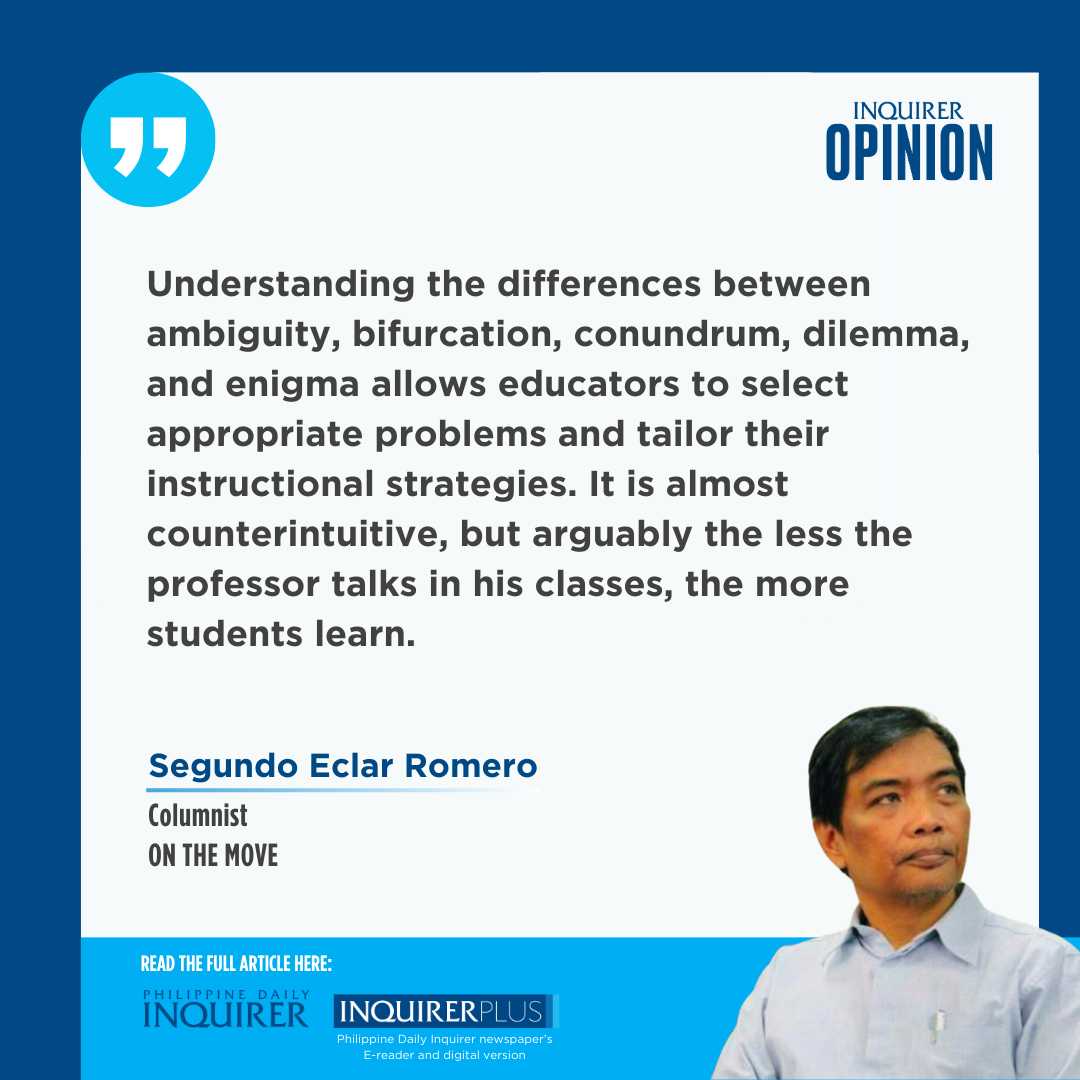Mainstreaming problem-based learning
I started teaching at the University of the Philippines in 1971 when I was 21, at most only six years older than my students. I had not attended a single formal training program on teaching.
As many colleagues in the college teaching profession have realized, knowing the basics of your discipline does not mean you can effectively teach that subject and impart substantive learning among your students. Traditional lecture-based education often falls short of preparing students for the complexities of the real world.
The problem-based learning (PBL) approach emerged as a response to these limitations, aiming to foster active learning and equip students with the skills needed to tackle complex problems. Instructors and professors need to continue improving their methods to respond to the learning needs of their students, but they are often too beleaguered in their career and workload to help capacitate themselves.
One of the operational challenges in the application of PBL in my experience is the design of focal problems that meet the following criteria—open-ended; relevant to students; deals with real-world situations; challenging but doable, and promotes inquiry and collaboration.
To diversify and enrich the problem formulation, I have developed what I call the ABCDE Spectrum of PBL exercises, which can be used in various fields of learning. The spectrum, from least to most challenging, consists of ambiguity, bifurcation, conundrum, dilemma, and enigma.
Ambiguity is often the starting point in PBL. It challenges learners to clarify key concepts, identify the key issues, gather relevant information, and frame the problem in a more structured manner. It is the lack of clarity or a situation with multiple possible interpretations. Ambiguity introduces uncertainty and encourages learners to seek clarification and define the problem more precisely. It is useful for developing information-gathering and analysis skills. Sample scenario: Many policies and programs provide for concepts like “participatory democracy” and “people empowerment,” but what do they really mean at the community level?
Bifurcation presents a clear choice between two options. Learners need to analyze the consequences of each path and justify their chosen solution. It refers to a situation with two distinct and often opposing choices or paths. Bifurcation encourages learners to weigh the pros and cons of each option and make informed decisions. Scenario: A local government unit is planning a large-scale infrastructure project but it will pass through an ancestral domain. (Two clear options with trade-offs.)
Conundrums require learners to think outside the box and develop innovative solutions. They foster collaboration and communication as learners work together to unravel the complexities of the problem. PBL challenges learners to think creatively and explore multiple perspectives to find solutions. Sample scenario: A rural municipality is facing “brain drain” as many of its young and educated residents migrate to urban areas in search of better opportunities. (A complex problem with no single, straightforward answer.)
Dilemmas force learners to confront difficult choices and consider the ethical implications of their decisions. Dilemmas present a situation requiring a choice between two equally undesirable or unfavorable alternatives. This type encourages learners to grapple with ethical considerations and complex decision-making. Sample scenario: A mining company proposes a project that promises significant revenue and job creation, but poses potential risks to the local watershed and biodiversity. (Both options have negative consequences.)
Enigmas are the most open-ended and challenging type of problem in PBL. They push learners to explore the unknown, gather and analyze evidence, and develop their own hypotheses and theories. PBL encourages learners to embrace uncertainty and engage in deep inquiry and research. Sample scenario: A population boom due to in-migration and high birth rate has uncertain long-term implications on the LGU’s ability to provide adequate services and maintain a high quality of life for its residents. (An enigma with limited information and multiple possible explanations or implications.)
Understanding the differences between ambiguity, bifurcation, conundrum, dilemma, and enigma allows educators to select appropriate problems and tailor their instructional strategies. It is almost counterintuitive, but arguably the less the professor talks in his classes, the more students learn.
Shifting from the role of a professor to that of a PBL facilitator is sometimes the best thing to happen in teaching. But making that transformation requires listening and responding to students’ needs, empathy, and new skills. It does not mean less work—the demand on the professor shifts from the delivery of routine lectures to the careful and thoughtful design of the problem-based learning ecosystem.
—————-
doyromero@gmail.com

















